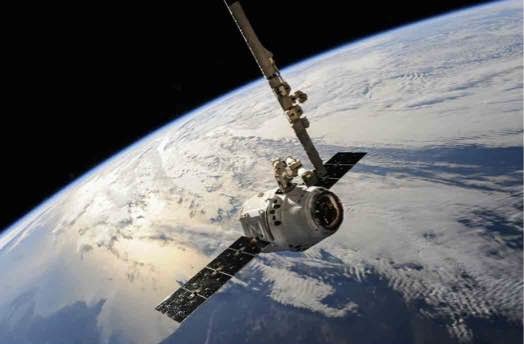
Have you ever looked up at the night sky and wondered how satellites stay in orbit without falling down? It seems counterintuitive – objects are pulled towards Earth by gravity, so shouldn’t satellites just come crashing down? The answer lies in a fascinating dance between gravity and motion.
Imagine a Ball Falling Through a Vacuum Tunnel
Think about a ball dropped straight down. It falls because of gravity. Now, imagine a giant vacuum tunnel dug right through Earth, connecting Japan and Brazil. If you dropped the ball in this tunnel, it would keep falling, gaining speed all the way to the center. But wait, there’s no ground there! The ball would keep going, pushed by its momentum, and eventually reach the Brazilian side. Earth’s gravity would then act as a brake, slowing it down until it stops. However, the pull of gravity wouldn’t be enough to overcome the momentum, so the ball would start falling back towards the center again, repeating this back-and-forth motion forever.
Satellites: Falling But Never Crashing
Satellites are like that ball in the imaginary tunnel, constantly falling towards Earth. But here’s the key difference: they also have a horizontal velocity, a sideways push that keeps them moving forward. If a satellite were dropped from space with no horizontal movement, it would indeed fall straight down. However, by launching satellites with a specific speed and placing them at a high altitude where there’s minimal air resistance, they achieve a continuous “fall” that never actually hits the ground.
Finding the Perfect Balance: Speed and Altitude
The secret lies in finding the right balance between speed and altitude. Satellites orbiting close to Earth, like the International Space Station (ISS) at around 400 kilometers, need a horizontal speed of nearly 8 kilometers per second – that’s fast enough to complete a marathon in just 5 seconds! Even at this altitude, there’s still some air resistance, so the ISS needs occasional thruster boosts to maintain its orbit. As the distance from Earth increases, the atmosphere thins out. A satellite at 1,000 kilometers could potentially stay in orbit for thousands of years without needing any adjustments!
So, the next time you gaze at a satellite streaking across the night sky, remember – it’s not defying gravity. It’s actually falling towards Earth, but its horizontal velocity keeps it in a constant state of “controlled descent,” forever orbiting our planet.

